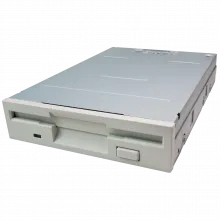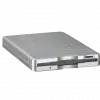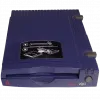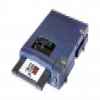
The original floppy disk was the eight-inch. These large disks predate the desktop machine, and were mainly used for transferring data between mainframe machines. Their capacity was extremely limited, by today’s standards, with 160 kilobytes available. The reason for the name 'floppy' was that the exterior casing was only soft flexible plastic, leaving them vulnerable to manhandling.











